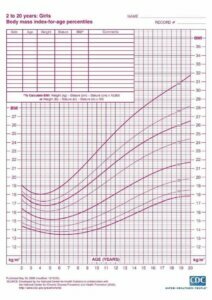The pandemic created a perfect storm for an “astronomical” increase in childhood obesity, according to a Children’s National Hospital pediatrician.
“In children, BMI is measured as percentiles. We’re seeing kids jumping from the 30-40th percentile going to the 80-90-95th percentile — so, moving from normal weight category to overweight to obesity in the last one year,” said Dr. Nazrat Mirza, medical director of the pediatric weight management clinic at Children’s National Hospital.

“In our weight management clinic, we’re seeing kids gaining 20 to 30 pounds in the last year,” she told WTOP. “Some of them gaining within a period of two to three months upward of 15 to 20 pounds.”
The clinic has received 600-plus referrals from pediatricians in the last six months. Normally, it gets a total of about 800 to 900 for the year.
Mirza believes the loss of structure related to the lack of in-person learning in school has impacted mealtimes, physical activity and bedtimes, leading to an “astronomical increase of obesity prevalence and severity depending on where you are.”
“So, if you are normal weight, [you move] to the obesity category, and if you are already obese, you develop more severe obesity,” she said.
Parents have to recreate that structure and get back to fundamentals, Mirza said, offering these suggestions:
- Serve three meals a day. “Make sure half the plate is fruit and vegetables, a quarter is some protein and a quarter is carbs,” Mirza said;
- Offer kids zero to two daily snacks. Make sure snacks of fruits or vegetables are already chopped up or prepared;
- Make healthy food and snacks easily accessible and available;
- Remove all comfort/junk foods from the house. “Out of sight, out of mind;”
- Eliminate sweetened beverages. “We’re seeing kids drinking seven to eight glasses a day. Get sweetened beverages out of the home;”
- Parents shouldn’t eat junk food in front of kids. “Don’t bring it to the house and expect the child to show self-control; that’s really hard;”
- Limit screen time after school to no more than two hours a day;
- Make time for 60 minutes of daily activity such as walking or playing. “Maybe parents could split this up into 20 minutes, three times a day [or] 15 minutes, four times a day — whatever works for that family;”
- Return to normal bedtimes. Kids need between eight and 10 hours of sleep daily. “When they’re up all night, they’re snacking all night;”
- Embrace the concept of “everyday” healthy foods such as fruits and vegetables and “sometimes” foods such as candies or eating out. “Limit that to one time a week.”
Don’t make the junk food a reward, Mirza advised. Stress that it’s a “sometimes” food, just like you “sometimes” might get dressed up for special occasions.
“A child might say ‘OK, so when can I eat the junk food? When am I good enough to eat the junk food?,’” so Mirza said kids have to know they’re not being punished.

Childhood obesity is associated with complications such as cardiovascular disease, diabetes, fatty liver disease, hip dysplasia, knee and ankle problems, sleep apnea and worsening of asthma. There is also the psycho-social component of low self-esteem, anxiety and depression.
Families need to be supportive. Don’t think of adjustments as dieting.
“This is not a one-time thing. This is for life. This is eating healthy for life,” Mirza said, pausing between each word for emphasis.
Shaming doesn’t work, either. “We don’t stress weight with children. It’s not helpful,” she said.
Every journey begins with a first step.
Don’t anticipate weight to drop off immediately. Healthy living changes that lower cholesterol and diabetes risk will begin happening metabolically, Mirza said, possibly along with improved mood.
“A child who has high insulin can feel depressed. And the high insulin is because they’re eating too much carbs and this is the precursor to diabetes,” Mirza said. “So by just by eating healthier and exercising, you can reduce your insulin and improve your mood.”








